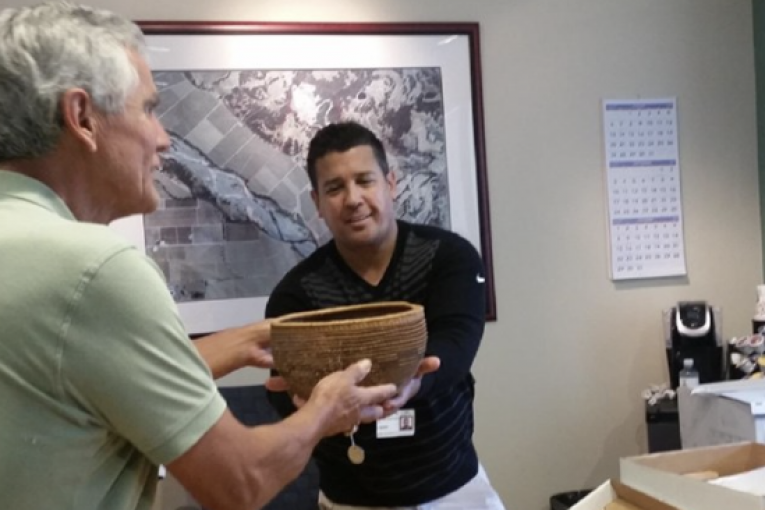![]()

By Riley Szenasi
DAVIS, CA– The U.S. Department of the Interior has recognized the need to amend the terms of NAGPRA and has invited the public to submit amendment proposals through January 2023.
The Native American Grave Protection and Repatriation Act (NAGPRA) is a federal reparation law passed in 1990, protecting human remains and other cultural artifacts.
The reparation law “requires museums, agencies, and universities that accept Federal funding to consult with Native American tribes regarding the repatriation of human remains, funerary objects, sacred objects, and objects of cultural patrimony in museum collections, or discovered on Federal or Tribal lands after 1990”.
It also demands that any public member first obtain an excavation permit approved by proper government officials. It requires the notification of the tribal leader overseeing the area before excavation and that it is in compliance with the Archeological Resources Protection Act.
In addition to the federal law, a California state law, Cal-NAGPRA, was established in 2001. It was amended in 2020 to “strengthen CalNAGPRA for non-federally recognized California Native American tribes and elevate the status of tribal traditional knowledge in determining cultural affiliation and identifying cultural items.”
Any institution that neglects to follow these regulations is subject to penalties for criminal and civil violations. With this law, Congress hoped to return these cultural items to their rightful owners and create a more positive and respectful relationship between tribal members and federal institutions.
Despite the law’s nearly 32-year enactment, not all of its goals have been achieved. Due to a lack of proper monitoring and enforcement, “remains of more than 116,000 Native American ancestors are still held by institutions around the country…the institutions have not linked the remains to a particular tribe, a designation known as ‘culturally affiliated’ that allows Indigenous groups to reclaim the bones of their forebears.”
The National Park Service explains that the repatriation process is long due to insufficient communication between the federal and tribal governments, NAGPRA’s ambiguity of the differentiation of secular and sacred objects, and the fact that this law only holds authority nationally.
As explained by the Center for Art Law, this loophole allows foreign governments to keep any uncovered sacred objects, as they are ethically responsible, not legally.
Tribal members seek to broaden the authority of the law so that native artifacts found outside the country are also protected.
Congress has not amended NAGPRA since its initiation, so the Department of the Interior’s acknowledgment of the Native American community’s needs is long overdue. To address these concerns the department has “hired a full-time investigator to enhance oversight and museum compliance”.
The USDA Forest Service Law Enforcement and Investigations encourages the public to contribute by respecting archaeological sites and artifacts. They also ask for one to report looting and vandalism in these areas, and volunteer in local land managing agencies, Historical Preservation offices, or archaeological societies.
This act is relevant to UC Davis, as the campus is upon Patwin tribal land. Today there are three officially recognized Patwin tribes: the Cahil DeHe Band of Wintun Indians of the Colusa Indian Community, the Kletsel Dehe Wintun Nation, and the Yocha Dehe Wintun Nation.
The university’s C.N. Gorman Museum of Native American Art stores more than 2,500 tribal artifacts and art pieces.
In observance of Native American Heritage Month this November, the university is encouraging students and staff to show their appreciation for the land and its native inhabitants by joining their celebratory events. This schedule can be found on the NAASSC website.

San Francisco previously “relocated” enormous graveyards (of mostly “white” people) to Colma, to make way for development. I doubt that they sought “approval” from their families – even those who might have directly known their deceased relatives. (The burials were not necessarily “ancient history” when they removed them.)
They still discover human remains under someone’s house (that were “missed” during the relocation).
https://www.mercurynews.com/2017/05/09/mystery-solved-19th-century-girl-in-casket-found-under-san-francisco-house-identified/
Personally, I’m tired of any group (including Native Americans) getting “special treatment” in any way, shape or form (e.g., the monopoly on gambling). Especially those who have no direct connection to a long-deceased person, but somehow lay “claim” to the remains.
Ancient remains (like culture) don’t “belong” to any particular race. They are part of the history of humanity as a whole.